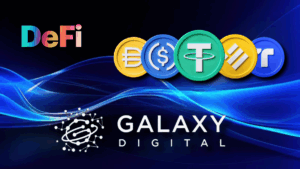In the continued quest to facilitate the expansion of its USDC stablecoin to new blockchain networks, Circle has taken an innovative step by introducing the “Bridged USDC” standard.
This initiative, revealed in a recent statement, seeks to simplify the process of launching USDC on different platforms through a two-phase methodology.
In the first stage, third-party developers control the token contracts, supporting this initial version on the new network through a native implementation on another platform.
Introducing Bridged USDC Standard, a new way to expand access to $USDC & reduce fragmentation.
EVM blockchain & rollup teams can now deploy a bridged USDC token contract with optionality for Circle to seamlessly upgrade to native issuance in the future.https://t.co/suSgllMQoQ
— Circle (@circle) November 21, 2023
It is important to mention that this initial token is considered “unofficial” by Circle, essentially acting as an intermediary for USDC in ecosystems where bridging between blockchains is allowed.
However, the most intriguing part lies in the second phase, where Circle takes control of the contracts. This is where the token gains direct backing from Circle’s reserves, potentially becoming an official and native issuance.
THIS TRANSITION FROM CIRCLE TO A NATIVE EMISSION IS NOT MANDATORY IN ALL CASES
The main motivation for this initiative is to eliminate the hassles associated with “migrations.”
Generally, when an unofficial version of USDC becomes official, users must manually exchange their tokens.
However, with the “Bridged USDC” standard, the aim is to avoid this process, allowing unofficial tokens in users’ wallets to automatically become official, if they wish.

To ensure compliance with this standard, the documentation on Github establishes specific guidelines for developers. They are required to use a bridge with update functionality for certain functions and are prohibited from modifying the bridge after the token is issued.
When it is decided to transition the token to an official version, the third-party developer can stop the creation of new tokens on the bridge and adjust the total supply of native USDC.
At this point, Circle takes ownership of the contract, burning the tokens backed by native currencies on the new network and backing the circulating tokens directly with its reserves.












